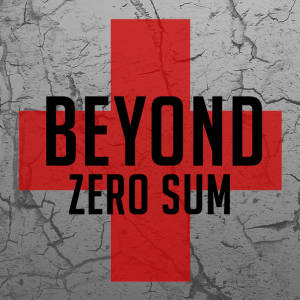 We discover, learn about and follow important world events through the endeavors of journalists and reporters working within media outlets which, taken wholly, has the purpose of disseminating information, presenting opposing analyses, and constructing discernible truths from a finite data pool. This purpose notwithstanding, as commercial entities, news organizations are still influenced by the need to continually associate with “fresh” topics lest they lose eyes and ears to the competition. Of course, what is and isn’t “fresh” is, on the flip side, influenced by the attention of ordinary people such as myself. A good example is the human toll of the civil war in Syria. (For a quick intro to my approach and this topic generally, check out previous articles here and here).
We discover, learn about and follow important world events through the endeavors of journalists and reporters working within media outlets which, taken wholly, has the purpose of disseminating information, presenting opposing analyses, and constructing discernible truths from a finite data pool. This purpose notwithstanding, as commercial entities, news organizations are still influenced by the need to continually associate with “fresh” topics lest they lose eyes and ears to the competition. Of course, what is and isn’t “fresh” is, on the flip side, influenced by the attention of ordinary people such as myself. A good example is the human toll of the civil war in Syria. (For a quick intro to my approach and this topic generally, check out previous articles here and here).
Like Afghanistan and Iraq, the conflict has been more-or-less internalized into a vague background of understanding which we carry in our daily lives (cf. Christopher Nolan’s Joker, “It’s all part of the plan”). Similarly, news coverage of the refugee and civilian crises is diminished somewhat—as I observe—from its peak last summer after the chemical weapons attack in Ghouta which commanded every headline in the United States. Part of the reason for the dilution of attention is that the gradual disintegration and collapse of this small Ottoman-French-Arab nation of 22 million people has proceeded at a fairly uniform pace since the government-versus-rebel forces narrative was applied as the framework with which to understand the war. Like a second act that has drawn on for too long, Syria is on fire but nobody knows what to do.
But let me clarify. The conflict is referenced several times in daily commentary, but more often as a contextual pivot for more pressing geopolitical concerns (e.g. Iraqi terrorism). As Simon Tisdall noted for CNN, “even if [observers] are not swayed by the human cost of a conflict that has become depressingly familiar, basic considerations of self-interested realpolitik suggest governments, politicians, and diplomats should be paying more attention to Syria.”
But for doctors, the humanitarian concerns are more immediate and should constitute the dominant narrative. Oxfam American President Ray Offenheiser underscored this point when opining that Syria could be “worse than Darfur”: “The discussion about red lines and chemical weapons and Islamic radicals may give the American public a pause, but the humanitarian crisis per se, and the fact that this is about women and children and lots of families and lost livelihoods and a country that’s going to have a hard time putting itself back together—all of that is getting lost in some of the more inside baseball political discussions about policy and potential negotiating outcomes.” Still, one Oxfam official for Syria, Andy Baker, is optimistic given the new attention to humanitarianism brought about by Iraq’s latest turmoil: “There is a refocusing of the world’s media on this—Syria was starting to fall off the agenda, so that’s good. Now that it’s back on the agenda, we need to capitalize on that for advocacy purposes.”
So what could be another point of focus? In the three years that have passed since a movement of peaceful demonstrations was violently distorted into the worst human catastrophe in recent history, 170,000 people have died. One-third of them were civilians and over 10,000 were children. Nine million have been driven from their homes, of which 2.5 million have been externally displaced to bordering countries. If we drew an analogy to the United States, it would translate to over 130 million Americans in search of refuge.
It’s worth noting that before the war, Syria was a “middle-income country” with above-average living standards compared to regional neighbors. It boasted a sturdy health system which provided free health services and subsidized drugs. It had its own pharmaceutical industry, which provided 90% of its medicines and exported to over 50 countries. Health indicators such as life expectancy were on par with those of wealthier, developed countries. Basically, chronic patients were able to receive steady care for diseases that are now killing them after major infrastructure collapse. The damage to infrastructure has been, indeed, grave. Polio, which had been totally suppressed since 1999, resurfaced recently—confirmed by the WHO—as the immunization rate fell from 91% in 2010 to 68% in 2012 (probably far less now). A letter recently published in The Lancet informs us that its resurgence could be a real threat to neighboring Europe: so now we should be really worried. 60 percent of the country’s hospitals and 38 percent of primary health facilities have been destroyed or are dysfunctional. Half of the doctors have fled the country, with some remaining few practicing in secret to avoid being targeted.

Now-infamous bullet-in-the-brain X-ray image of a term fetus shot in the head by a Syrian sniper targeting pregnant women released by British surgeon David Nott. His quick surgical skills enabled the mother to survive.
Thus, the decline is serious, and we’re watching the death of a nation, though not necessarily the death of a population. It’s likely that many of the displaced will never call Syria home again. For now, the refugees who were able to get out are stuck in overcrowded shelters in neighboring countries, particularly Jordan and Lebanon. The most prominent site, the Zaatari Camp in Jordan has treated over 370,000 Syrian refugees including 512 infant deliveries (455 C-sections). But these camps are strained and underfunded. Moreover, access to the displaced still living in Syria is severely limited. Bloated aid agencies complicate the situation further still. A July 2014 report from Doctors Without Borders (MSF) was deeply critical of the bureaucracy and risk-aversion of the biggest crisis response groups, particularly the UN which was noted to be at the “core of many of the system’s dysfunctions.” Even with the billions of dollars that have been poured into the aid effort, “charities reduce spending on logistics, avoid the most chaotic regions and target the victims who are the easiest to reach.”
The plight of the displaced undoubtedly has major implications for the historical trajectory of the region for generations to come. One observer lamented that “Not since the horror of World War II has the planet seen a forced migration the size of the Syrian diaspora that began three years ago.” Nevertheless, global health advocates and clinicians interested in poverty and development efforts ought to acknowledge the human costs of the war when presented with the mandates of “realpolitik.” Geopolitical circumstances might suggest that the war’s trajectory is out of our hands, but for its victims on the move, there is still important work to be done.
Beyond Zero Sum is a column that examines the civilian consequences of the Syrian civil war as well as the responses of the international medical community to the rapidly escalating crisis. It takes its name from a reflection by Bill Clinton on humanity in the 21st century: “The more complex societies get and the more complex the networks of interdependence within and beyond community and national borders get, the more people are forced in their own interests to find non-zero-sum solutions. That is, win-win solutions instead of win-lose situations because we find, as our interdependence increases, that, on the whole, we do better when other people do better as well.”

